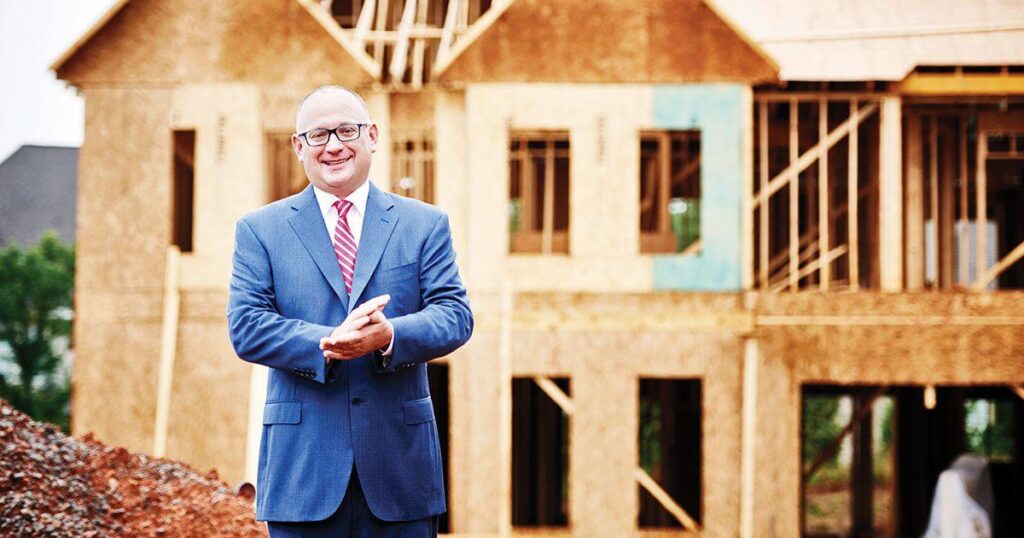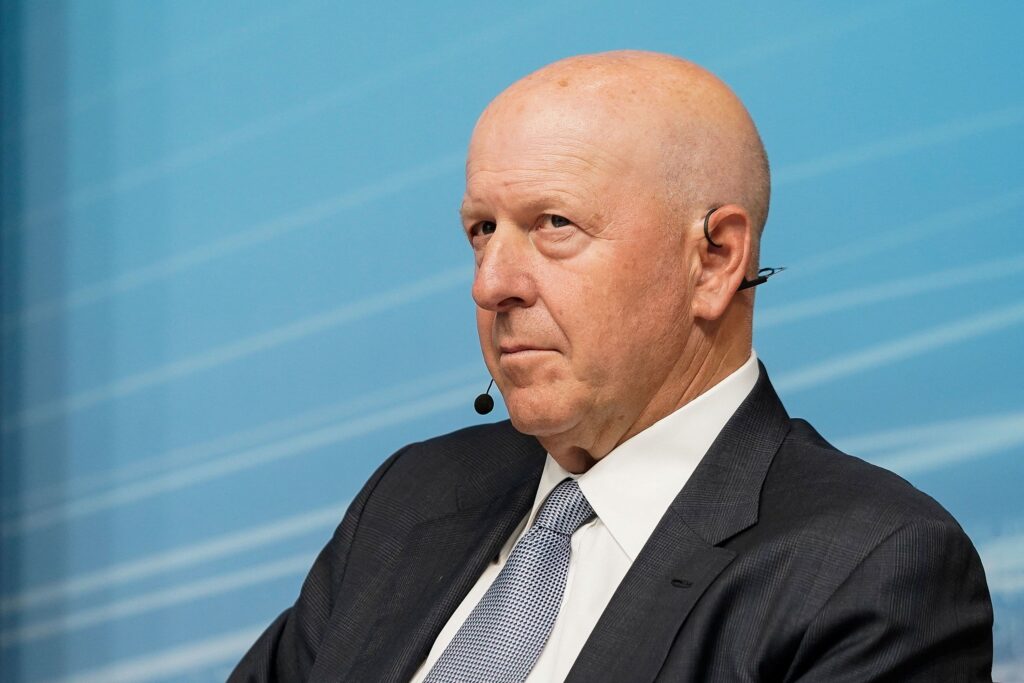After much deliberation and anticipation, on Wednesday, October 11, 2023, Goldman Sachs announced that they were offloading their failing consumer lending acquisition, GreenSky.
It’s been a long time coming. As far back as April, Goldman announced they were searching for a buyer to take on the specialty lender. Earnings calls earlier this year showed the financial giant was facing mounting losses in their consumer lending arm, and GreenSky made up a large chunk.
Although Goldman’s acquisition of the lender went through less than two years ago, it has been the source of much criticism for CEO David Solomon. The continued push into consumer-facing business was his brainchild that many Goldman Sachs investors opposed.
Where did it all go wrong? To find out that, we’ll go back to the beginning.
GreenSky Reached High Highs
In the late spring of 2018, GreenSky broke the lull of large fintech IPOs originating from the US. Since 2014, which saw the IPOs of Lending Club and OnDeck, the global fintech industry had been growing, but the US was yet to see more significant movement onto the public market.
By going public and raising over $800 million, GreenSky made headlines as the largest fintech IPO of the year. Shares sold at higher prices than expected and at a higher quantity, reflecting the company’s ongoing success.
The company had grown “quickly and quietly,” focusing primarily on home improvement loans. Partnering with deposit-rich banks, GreenSky acted as a “lending middle-man,” offloading some of the risk of defaults.
“We’re very old-fashioned,” said then-CEO David Zalik in a Forbes profile piece. “It has to be safe and predictable for our bank partners.”
The business model had worked for them, and the company had achieved six years of profitability prior to going public. Its focus on home improvements and contractors as the point of sale of the loan to consumers had allowed it to avoid going head-to-head with established BNPL players like Klarna and Affirm. Its foray into loans for large ticket items and furniture had not taken off, but in 2018, it still had the shining appeal of potential growth.
The company, back then, “had the opportunity to create a brand,” according to Joel Babbit, the CEO of Narrative Content Group and the only marketing expert on GreenSky’s board at the time of Forbes’ profile in August 2017. The team’s hopes were high, and Zalik had a vision for GreenSky’s point-of-sale financing future.
Three years after the IPO, stocks for the company had tanked, and Goldman came on the scene.

2021: Goldman Agrees to Acquire Greensky
Perhaps to say Goldman got involved with GreenSky after the stock had more than halved puts their acquisition idea in a bad light.
GreenSky, at the time of its IPO, had a valuation of $4 billion and was seen as a hot ticket into BNPL. The company, three years later, still had a network of 4 million consumers financing a total of $30 billion and held a $9 billion loan portfolio. The valuation had slipped, with Goldman agreeing to acquire the company at $2.24 billion, but that could have panned out as a good deal for the finance giant.
Everyone was getting into BNPL at that time, and Goldman’s initial (successful) venture into the space with Apple, for Apple Pay Later, had limited options for growth after Apple announced their partnership with Affirm for business outside of the US.
So, the giant turned to the home improvement specialist for the cornerstone of their consumer lending dreams.
Coming out of the pandemic, the home improvement space had boomed. Estimates had the market at more than $420 billion, with predictions of growth to over a trillion dollars by 2030. Goldman’s acquisition of GreenSky placed them firmly at the forefront of financing that growth, leveraging the lender’s 10,000+ merchant partners.
“We have been clear in our aspiration for Marcus to become the consumer banking platform of the future, and the acquisition of GreenSky advances this goal,” Chairman and CEO David M. Solomon said at the announcement of the plans for acquisition.
A few months later, when the deal actually went through, GreenSky’s valuation had already slipped to $1.7 billion.
The Changing Conditions For BNPL
For a few years, BNPL was the next big thing, and GreenSky was the name for US home improvement. However, Goldman’s acquisition inked as the company came off the tail of its pandemic highs and was fated for a difficult landscape.
As a “victim of its own success,”, BNPL, which primarily relied on granting “free” loans to consumers, faced rising expenses as interest rates started to rise at unprecedented rates. While growth continued, the sector faced a dilemma. Profits were declining as BNPL firms deliberated passing on the higher costs to their customers.
GreenSky wasn’t the only one hit. BNPL giants such as Klarna also saw their valuations slide.
While remaining steady, default rates faced an economy that was tipped for hardship as BNPL’s main customer segment, the “financially vulnerable,” braced for heightened costs of living and decreased spending power.
The sector also continues to wait for established regulation. In early 2022, it was still languishing in a trust void created by the CFPB’s investigative probe, later showing the lending option has “several areas of risk of consumer harm.” While specific rules targeting the sector in the US are still elusive, other nations have announced intentions to “crackdown” on providers.
RELATED: BNPL regulation unclear – merchants’ trust in the balance
Goldman’s untimely acquisition was flung straight into a poor light. The company’s first quarterly earnings that reflected the results of their decision showed losses of $1.66 billion for the “platform solutions” business unit, of which GreenSky was to be the crown jewel.

Heightened Opposition from Investors
Another stumbling block for Goldman’s GreenSky success was their conceded missteps around their consumer banking goals. CEO David Solomon had frequently been criticized for his focus on the consumer business, and investors were reportedly applying pressure for its demise.
“I’ve seen discussions where investors have expressed their distaste and frustration about the level of attention paid to the consumer business,” said UBS Group AG analyst Brennan Hawken to Bloomberg in June 2022. “They don’t see that as a value-enhancing proposition.”
Mere months after the GreenSky acquisition, Goldman announced their intention to “scale back” their consumer banking arm. While Marcus had initially been successful, after Solomon’s appointment as CEO, the consumer business underwent a series of decisions that, looking back, were called missteps.
Profitability was still elusive, and the acquisition of GreenSky, the largest made under Solomon, added more fuel for criticism to an area of the business that was already under scrutiny. GreenSky needed to make good on its potential for profitability quickly to turn its negative outlook.
However, it faced a declining market. Competitors and comparable companies had already tanked.
The consumer banking business kept hemorrhaging money. Goldman was slowly selling it for parts as key components failed to turn the tide.
RELATED: Goldman bids farewell to consumer banking push
GreenSky’s Long-Anticipated Sale
Wednesday’s sale of GreenSky marks the long-awaited end of Goldman’s focus on creating a “digital bank of the future.” Instead of “seeking to acquire customers on a mass scale,” the company has long said it would focus on the existing Marcus customers. Rumors of Goldman’s search for a GreenSky deal were reported as far back as April of this year.
The buyers are a group of money managers, including private equity firms Sixth Street and K.K.R. No official numbers of the selling price have been released, but rumors in June eluded to a number between $300-$500 million.
Regardless of the sale price, Goldman is predicted to take a steep loss from the transaction, which is likely to appear in its Q3 earnings, to be released next week. Until the deal goes through in early 2024, Goldman will continue to operate the platform and record its business results.
“This transaction demonstrates our continued progress in narrowing the focus of our consumer business,” said Solomon in the company’s statement regarding the sale. “While GreenSky is an attractive business, we are focused on advancing the strategy we laid out for our two core franchises.”


